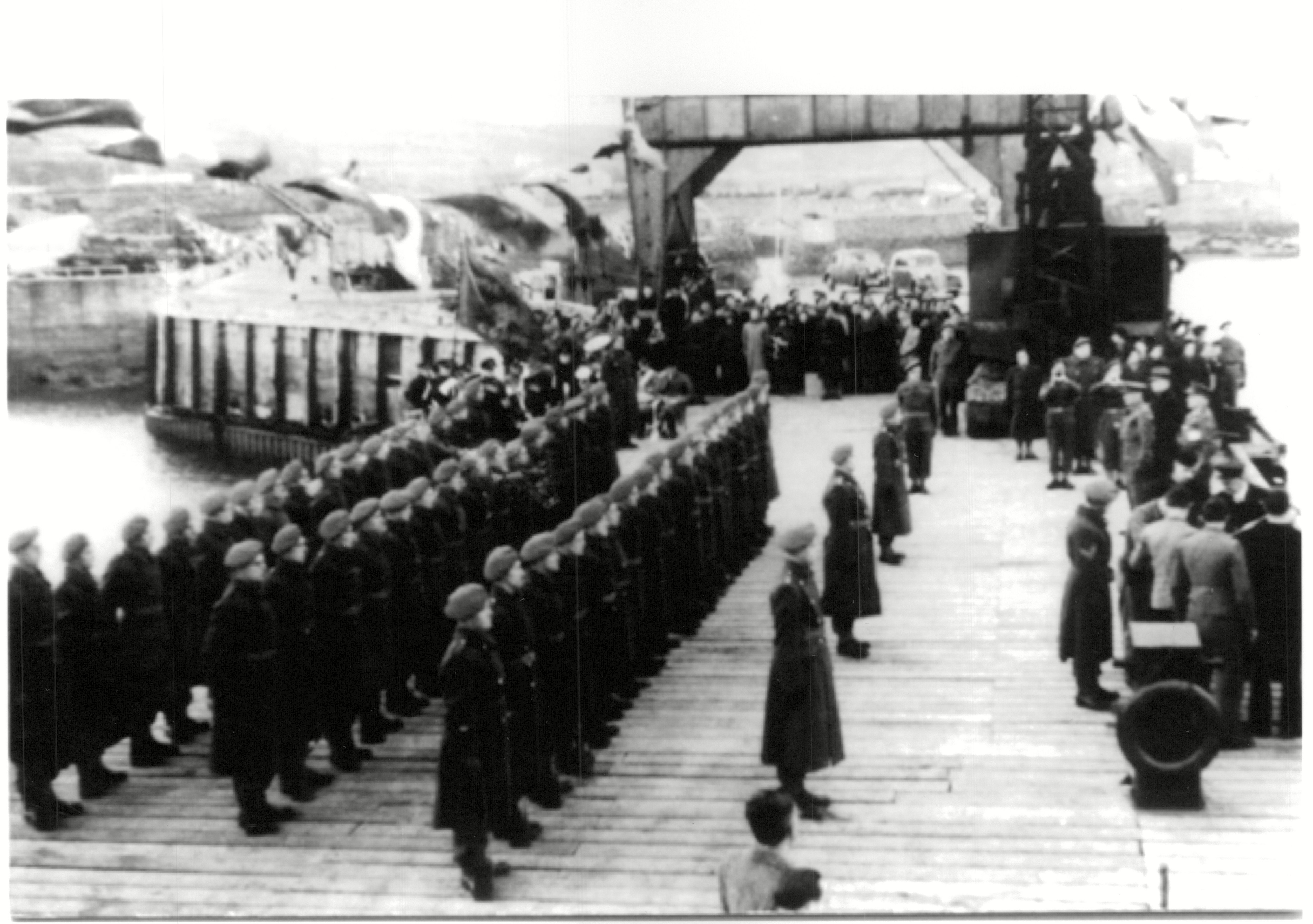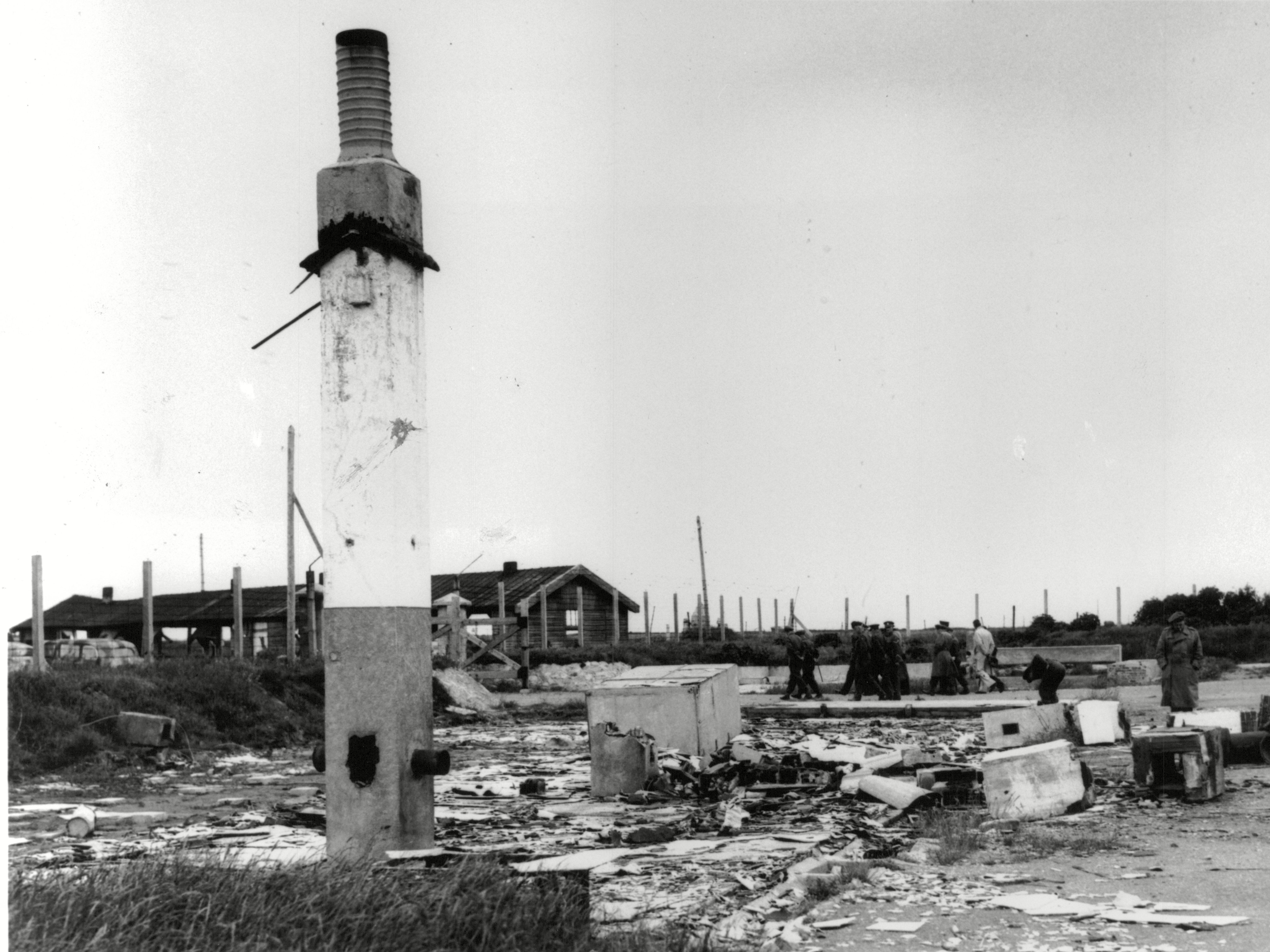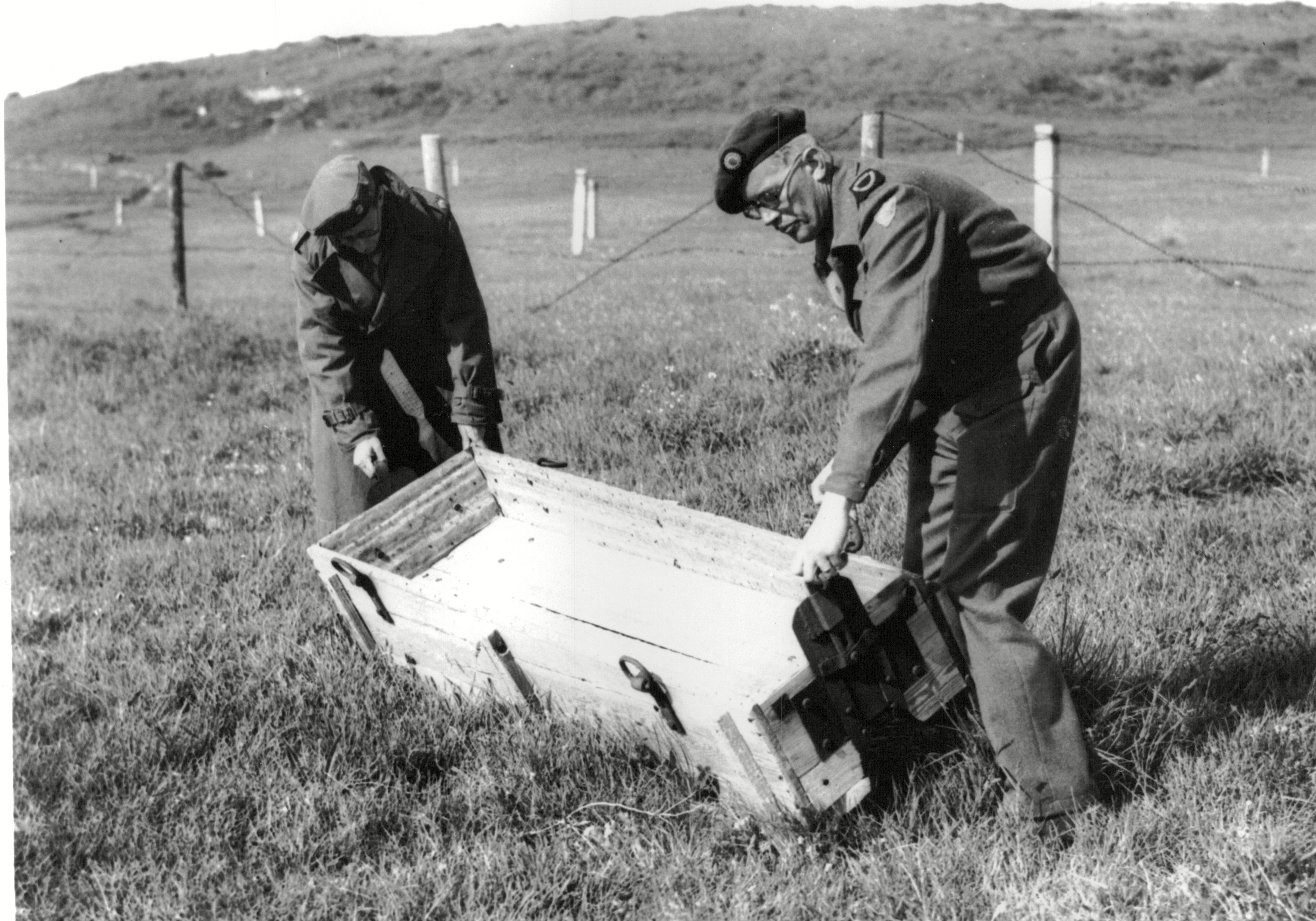Finally, the truth about what happened in the Nazi concentration camp on British soil
For years, historians and residents have fought over how many people died under the Nazi occupation of Alderney in the Channel Islands. This was no ‘mini-Auschwitz’ is the conclusion of the latest report but it doesn’t mean that horrors were not committed here and that there wasn’t a cover-up of sorts, says Guy Walters


It looks like the war in Alderney may soon be over. The war in question is not the Second World War itself but rather the bitter conflict about its legacy on this tiny Channel Island, with just 2,000 inhabitants populating its three square miles. For the past few years, resident has been pitted against resident, historian against historian, and even resident against historian, in the debate on just how many prisoners and slave labourers died on the island when it was occupied by the Nazis, and how these poor souls should be remembered.
While some resolutely stick to the official post-war investigation that stated that 389 forced labourers and prisoners had died, others are insistent that the true figure was far, far higher, and ran into several thousand, with a few even stating that the figure could be as high as 40,000.
Over the past few years, I have seen first hand just how divisive this issue has become, not only on Alderney – which, it should be stressed, was evacuated before the Germans came – but also on Jersey and Guernsey, whose populations did live under the Nazi jackboot. There is no doubt that Alderney, while a glorious place to visit, does have a dark past, as is evidenced by the recent discovery of the distinctively striped uniform of a concentration camp inmate in a house on the island, which I was able to see at the island’s museum.
To settle this once and for all, Lord Eric Pickles, the United Kingdom’s post-Holocaust issues envoy, announced a review of evidence last July that would be conducted by a panel of some dozen academics.
The findings of that report were published today, and the panel has concluded that “the number of deaths in Alderney is unlikely to have exceeded 1,134 people”, although it adds that the “more likely range of deaths” is between 641 and 1,027.
Pickles’s review can be seen as an effective continuation of what is widely known among historians as the Pantcheff report. Captain Theodore Pantcheff – the officer conducting the initial investigation back in 1945 – always acknowledged that his figure of 389 could not be considered definitive, and it was likely that many more had died.
The report also finds that some 7,600 to 7,800 prisoners were transported to the island, of which 594 were Jewish people. But the report is careful to state that this wasn’t a “mini-Auschwitz” – this group was “not sent to Alderney to be systematically murdered” – “but to exploit their labour”.
As a result, the panel suggests that perhaps no more than eight Jewish people were to die on Alderney. While of course, that figure is low, their exploitation and this handful of deaths means, in the words of the report, “the Holocaust therefore is part of Alderney’s history”.
Nevertheless, this very low figure will undoubtedly come as a large surprise to many historians and some members of the Jewish community, who had supposed that many more Jews had died and were buried on the island. Indeed, it was the supposed presence of mass Jewish graves on a part of Alderney called Longis Common that had seen the chief rabbi of the UK, Ephraim Mirvis, writing in 2019 to the authorities there voicing his concern about the “possible disruption” to the Jewish burial sites that would be caused by the installation of a cross country electricity cable.

This proved to be a catalyst for a renewed focus on to what extent the Holocaust had taken place on the island, an issue that proved to be so divisive, that it ultimately necessitated Pickles’s review. While the report does acknowledge that the Holocaust is part of Alderney’s story, in his foreword, Lord Pickles is categorical that the island “did not house a ‘mini-Auschwitz’.”
However, the report’s concluding comments are somewhat more subtle and contain this key passage: “The centrality of the Holocaust in the collective memory of the West informs the interest of the wider public in the question as to whether the Holocaust directly impacted Alderney. […]
“We must concede that we choose to remember the Holocaust, a totalising concept that brings together many different histories of persecution, suffering, betrayal, and charity, because we have plotted it as the morality tale par excellence for our multi-cultural, multi-ethnic, yes multi-everything societies. However, the wartime story of Alderney does not offer any obvious lesson that allows itself to become a powerful element of recollection in that morality tale.”
In essence, the report is saying that the Holocaust may have happened on Alderney, but only in a very, very small way. This will come as a relief to those islanders who were concerned that their home would become a haven for ghouls attracted by “dark tourism”, but will doubtless cause upset among those who remain convinced that hundreds of Jews were killed and are buried on Alderney.
One of the purposes of the 1945 investigation was of course to identify the Nazi war criminals who were responsible for running the four main work and concentration camps on the island. One of these camps, Sylt, was a full-blown SS concentration camp, which gives Alderney the unwelcome distinction of being the only part of British soil to have housed such a place.
Its commandant, an SS officer called Maximilian List, escaped justice after the war, despite carrying out numerous atrocities. In this respect, he was completely typical, as nearly every known perpetrator on the island was to die a free man.
Unsurprisingly, many over the past decades have concluded that this lack of justice is indicative of a cover-up, and that somehow the British were unwilling to shine a light on the fact that atrocities had taken place on the Channel Islands, even though almost no islanders – unlike on Guernsey and Jersey – were actually present on Alderney during the occupation.
It is as much of a Holocaust distortion to exaggerate the number of deaths as it is to underplay the numbers. Exaggeration plays into the hands of Holocaust deniers and undermines the 6 million dead. The truth can never harm us
However, as the Pickles review shows, the real reason appears to be less murky and cynical, but equally fascinating.
According to a document from 31 July 1945 seen by the panel, the British, believing, albeit incorrectly, that nearly all the victims of crimes on Alderney were Russian, decided that the best course of action “would be to offer to hand over to the Soviet authorities for trial all the Germans implicated in these war crimes together with all the evidence that we have collected”.
The motive behind this was not to pass the buck, but simply as a gesture that might “encourage the Russians to give us more spontaneous help in other cases, particularly the Stalag Luft III case”.
When news of the Stalag Luft III murders, which saw 50 members involved in the “Great Escape” executed, reached Britain, there was a huge public demand for the perpetrators to be brought to justice.
As Professor Anthony Glees states in his section of the report: “What was ‘covered up’, it should be emphasised, was not a lack of fervour on the part of the British to convict Nazi war criminals. […] Rather it was that the case had been handed over almost at once to the USSR and that the USSR did nothing with it. This has been hidden from public view until now.”
The report produced by the panel runs to 93 pages and contains an impressive amount of archival and archaeological research. This even includes highly disturbing eyewitness testimonies, such as that made by John Dalmau, a Spanish prisoner, who described how, following some air raids on German cities, Jews were made to “dance” by SS guards: “Fifty or more political prisoners and Jews were made to jump by firing bullets at their feet. When one was hit and fell, another bullet was fired, this time in the head. This continued until the last man had fallen.”
Lord Pickles is adamant that this is now the final word. The panel members have, he says, “produced a serious work that will stand the test of time. Such is the depth of detail and expertise behind the numbers presented here, no ‘lost’ files or ‘newly discovered’ burial can change these core figures by any order of magnitude”.

Lord Pickles is also reasonably splenetic about those who claim significantly higher numbers died on Alderney, particularly those who claim that hundreds, if not thousands, of Jewish people perished there.
“Numbers do matter,” Pickles says in the report’s foreword. “It is as much of a Holocaust distortion to exaggerate the number of deaths as it is to underplay the numbers. Exaggeration plays into the hands of Holocaust deniers and undermines the 6 million dead. The truth can never harm us.”
Although Pickles doesn’t name those who are claiming higher numbers, it is likely that one of those he had in mind is Marcus Roberts, the director of jTrails – the National Anglo-Jewish Heritage Trail – who strongly believes that there were thousands of Jews on Alderney.
Although Roberts was not given advance access to the report, he was made aware over the weekend that the figure would be around 1,100.
“If there were only 1,100 deaths on Alderney, this is incompatible with the original announcement of the Pickles review that ‘extermination by labour’ took place on Alderney,” says Roberts. “There was an official 85 per cent global death rate reported in the northwestern France slave labour camps.”
If Roberts is right, this means that the death rate on Alderney would have been far, far lower, at around 14 per cent.
“The panel must have rejected multiple claims that there were ‘thousands’ of deaths, made by credible witnesses and researchers,” says Roberts. “Even Professor Glees, a special adviser to the Pickles review, said there were 3,000 deaths for many decades. A Russian slave, Georgi Kondakov, reported 4,014 Russian deaths (of 5,000), based on an official register he made in Paris.
“There are multiple reports I have collated, claiming 1,290 to 1,490 Jewish deaths in specific incidents. The final death toll calculation must start with the witness calculations in the lower thousands and proceed with well-evidenced estimation. It appears there were many more Jewish deaths than generally accepted.”
It remains to be seen how much traction the likes of Roberts will have when set against a panel of international academics. In the meantime, many residents of Alderney itself are likely to want this war to be over.
This article was updated on the 29 of May
Join our commenting forum
Join thought-provoking conversations, follow other Independent readers and see their replies
Comments


Bookmark popover
Removed from bookmarks